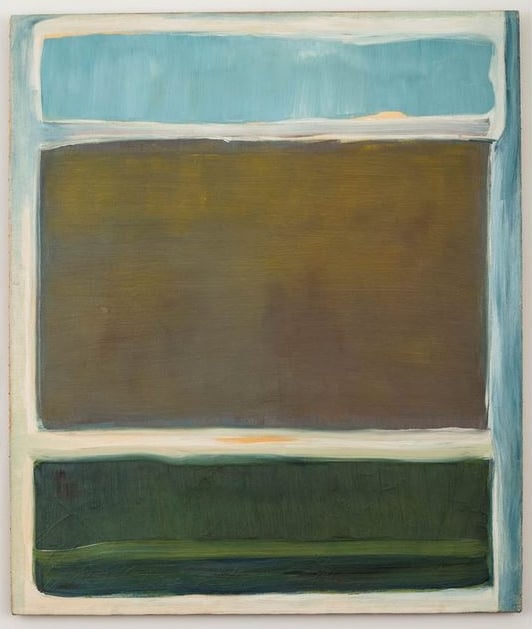Auctions
All the Evidence Indicates It’s a Rothko, but Experts Refuse to Authenticate


Sarah Cascone

One man’s nearly three-decade quest to authenticate a potential Mark Rothko painting purchased at auction for $319.50 plus tax has turned up convincing evidence in the work’s favor, but the experts seem unlikely to issue a ruling, reports the Wall Street Journal.
The painting, which features Rothko’s iconic stacked rectangular blocks of color, bears the artist’s signature and the name of the California School of Fine Arts (now the San Francisco Art Institute), where Rothko taught in 1949.
A lifelong collector, Douglas Himmelfarb, spotted the painting at a South Los Angeles auction preview, and immediately did his research. When he made the connection between Rothko and the school, he knew he had to the buy the piece. After the sale, Himmelfarb traced the canvas to the collection of Mollye Teitelbaum, who had owned it since at least 1964. From there, Himmelfarb began the arduous process of finding proof that his auction find was the real deal.
In the years since, Himmelfarb has found little support from the art establishment, while his personal fortunes have taken a dramatic downturn: the government recently foreclosed on his Hawaii home. If his Rothko is real, it could be his salvation, but it seems that no one is willing to issue an opinion.
The authentications business, as another WSJ article recently highlighted, has become particularly fraught, as estate-run committees for artists such as Keith Haring and Andy Warhol have shut down rather than face the threat of litigation as a result of issuing an unpopular or erroneous opinion.
Rothko expert David Anfam, who published the artist’s catalogue raisonné in 1998, has been familiar with Himmelfarb’s painting since the late 1980s. The scholar even discovered a black-and-white photograph of the work in the archives held by Rothko’s family, but still declined to include the work in his book.
Turning to the artist’s estate also proved unfruitful. “I am afraid that the Rothko family, as a matter of strict policy, does not involve itself in questions of authenticity,” wrote Rothko’s son Christopher in response to Himmelfarb’s inquiries.
As part of his bankruptcy proceedings last year, Himmelfarb, who had never seen the crucial photo for himself, was able to subpoena it, providing solid evidence in his favor. The Rothko family, however, only turned over the photograph with the disclaimer that they “specifically caution against drawing any undue inference of authenticity.”
Although some, like former Honolulu Academy of Arts director Stephen Little and retired curator and museum director Peter Selz, have voiced their support of Himmbelfarb’s painting, only a verdict from the estate or from Anfam can truly legitimize the work.
In a court deposition, Christopher Rothko admitted he does not know anyone who is currently authenticating his father’s work. Anfam, for his part, as his legal adviser unequivocally stated, “will never, under any circumstances, give an opinion on Mr. Himmelfarb’s painting.”